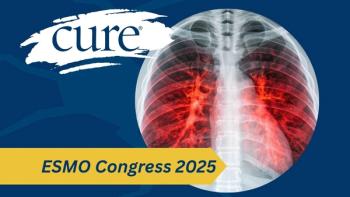
Antiangiogenic Gene Therapy, Added to Standard Treatment, Boosts Survival in Recurrent Glioblastoma
Avastin plus a novel antiangiogenic gene therapy resulted in significantly better overall survival for patients with recurrent glioblastoma multiforme.
A novel antiangiogenic gene therapy, added to another antiangiogenic agent, Avastin (bevacizumab), led to significantly better overall survival (OS) in recurrent glioblastoma multiforme (GBM) compared with historical patients treated with Avastin alone, a small phase 2 trial showed.
Patients who received continuous ofranergene obadenovec (VB-111), plus Avastin at progression, had a median OS of 59 weeks, which was significantly prolonged compared with a historical median of 32 weeks for those taking Avastin monotherapy. Continuous treatment also proved superior to initial treatment with VB-111 followed by Avastin monotherapy at disease progression. The combination of VB-111 and Avastin was well tolerated and did not produce any unexpected toxicities, as reported at the 2016 Annual Meeting of the American Society of Clinical Oncology (ASCO), a gathering of 30,000 oncology professionals in Chicago.
“These results are as good as any that have been reported with this type of agent,” said Andrew J. Brenner, medical director of the Cancer Therapy & Research Center at the University of Texas Health Sciences Center in San Antonio. “The survival essentially doubled in comparison to the historical data with bevacizumab monotherapy.
“The safety and tolerability were manageable and consistent with our expectations. The results supported moving forward with a phase 3 study in patients with recurrent glioblastoma, which has already begun. We have enrolled more than 50 patients and expect to complete patient accrual by the end of the year.”
GBM is the most common malignant primary brain cancer in adults.
VB-111 is a first-in-class targeted antiangiogenic gene therapy that has applicability to multiple solid tumors. Antiangiogenic drugs prevent blood vessels that feed tumors from growing. VB-111 consists of a nonreplicating adenovirus, a modified murine pre-proendothelin promoter and a fas-Chimera transgene. VB-111 homes in on the endothelium of tumor vasculature, and interaction with tumor blood vessels leads to activation of the gene and apoptosis, or cell death.
Administered intravenously every two months, the agent has broad antiangiogenic activity that leads to tumor starvation and induction of an antitumor immune response. Studies have demonstrated effectiveness in combination therapy, and three tumor-specific, phase 2 trials yielded evidence of an efficacy signal. Safety and tolerability have been documented in more than 170 patients with cancer.
Brenner reported findings from an international multicenter phase 2 study involving 62 patients with recurrent GBM. Results were compared against historical patients treated with Avastin monotherapy.
Avastin has approval from the U.S. Food and Drug Administration (FDA) and is the standard of care for recurrent GBM in the United States. Reports from prospective and retrospective studies have included survival data for Avastin monotherapy in recurrent GBM, which could serve as a benchmark for novel agents evaluated in single-arm clinical trials, Brenner and colleagues noted in a poster presentation.
Of the 62 patients enrolled, 46 were included in the efficacy analyses. The first 22 patients discontinued VB-111 at disease progression and initiated Avastin monotherapy (limited therapy). Following a protocol amendment, the remaining 24 patients started treatment with VB-111. At progression, Avastin was added to treatment, and both drugs were continued until further disease progression (continuous therapy).
For the efficacy analysis, investigators performed a literature search and identified eight clinical trials involving a total of 694 patients with recurrent GBM treated with Avastin monotherapy. They pooled data from the eight trials to create a historical comparator group. The primary outcome was OS. Patients received as many as 13 doses of VB-111. The results showed that continuous treatment with VB-111 plus Avastin led to a 38 percent reduction in the survival hazard, as compared with the historical patients treated with Avastin monotherapy. Continuous treatment with VB-111 and Avastin added at progression also improved survival compared with VB-111 limited-exposure group (median OS: 59 weeks vs 33 weeks).





